Learn How to Identify and Save Overwatered Pilea with simple tips and tricks that will help you to keep it thriving all year round!
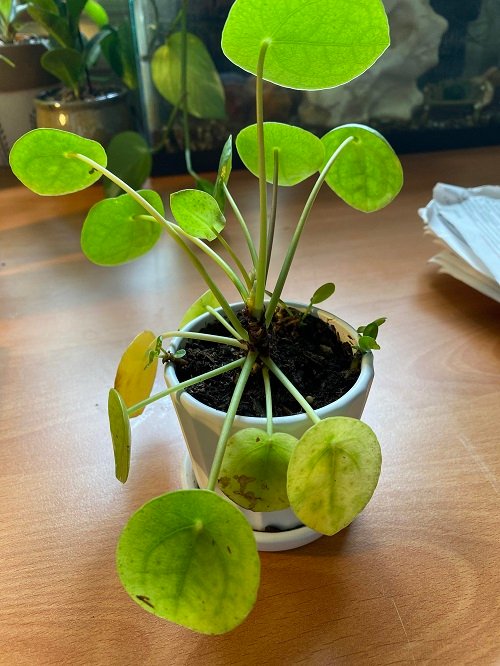
Overwatered Pilea is a common issue with most houseplant owners and this article will help you to how to prevent yourself from doing it.
Read about Pilea peperomioides Care here
Main Reasons Behind Overwatered Pilea
- Pilea plants prefer slightly moist soil, but they are susceptible to root rot if the soil remains excessively wet for prolonged periods. It’s important to allow the soil to dry out partially between waterings.
- Insufficient drainage is another factor that can lead to overwatering. If the Pilea is potted in a container without drainage hole, water can accumulate in the bottom, leading to waterlogged soil and root rot.
- Using a pot that is too large can contribute to overwatering. When a plant is in a container that is too big, the excess soil retains more moisture, making it difficult for the plant to absorb water properly. This can lead to root rot and overwatering.
- Pouring excessive amounts of water or not allowing the water to drain properly during watering can contribute to overwatering. Ensure that you water the Pilea thoroughly but allow excess water to drain out of the pot.
Learn all about Silver Tree Pilea Care here
Signs You Are Overwatering Your Pilea
Here are some signs to look out for that may indicate you are overwatering your Pilea plant, along with potential solutions:
1. Yellowing or Wilting Leaves
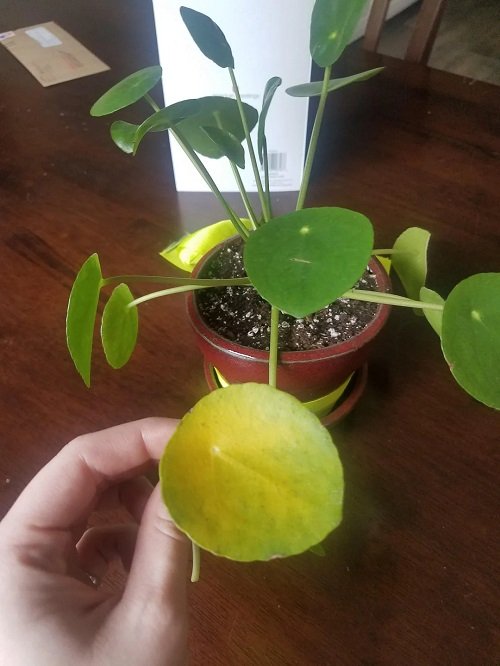
Overwatering can lead to yellowing or wilting leaves. The excess moisture causes the roots to suffocate, inhibiting their ability to uptake nutrients properly. If you notice yellowing or wilting leaves, it’s a sign that you may be overwatering.
Solution: Allow the soil to dry out partially between waterings. Adjust your watering frequency to ensure the soil is slightly moist but not saturated. Check the moisture level by inserting your finger into the soil to determine when it’s time to water again.
Here are Reasons for Houseplants Leaves Getting Yellow and How to Save Them
2. Mushy or Discolored Roots
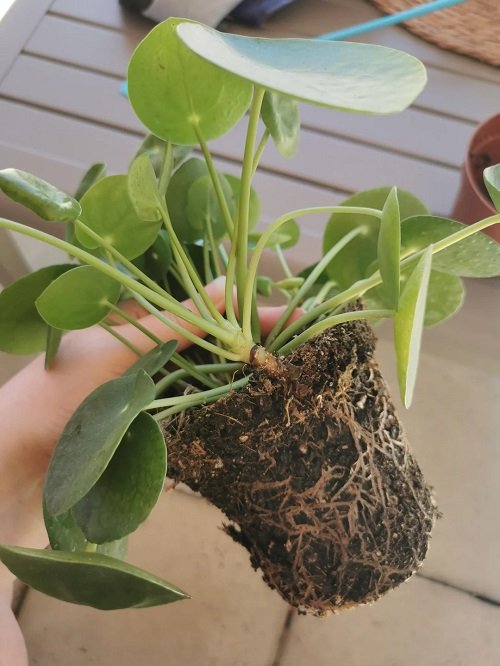
Overwatering can cause root rot, which is characterized by mushy, brown or black roots. When the roots are damaged, they cannot efficiently absorb water and nutrients, leading to plant decline.
Solution: If root rot is present, carefully remove the plant from the pot, trim away any damaged roots, and repot it in fresh, well-draining soil. Ensure the pot has drainage holes to prevent future waterlogging.
3. Fungal Growth or Moldy Soil
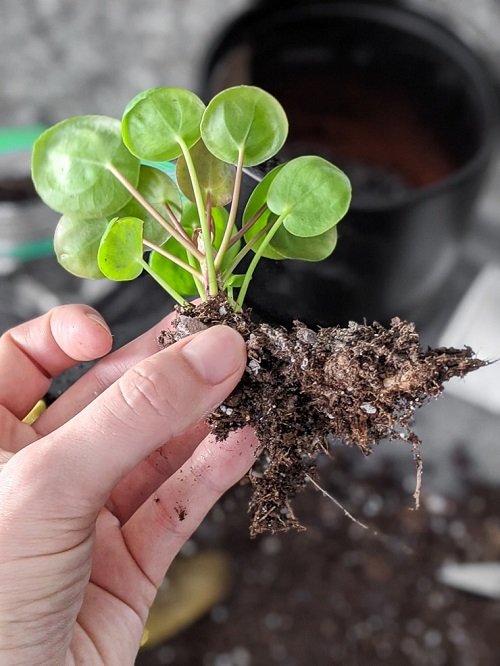
Overly moist soil provides an ideal environment for fungal growth. If you notice moldy soil or the presence of fungal growth on the soil surface, it’s an indication of excess moisture.
Solution: Improve soil drainage by repotting the Pilea in a container with drainage holes. Allow the soil to dry out more thoroughly between waterings. You can also sprinkle cinnamon powder on the soil surface, which has antifungal properties and can help inhibit fungal growth.
Here is How to Kill Plant Fungus with Baking Soda
4. Stunted Growth or Lack of New Growth
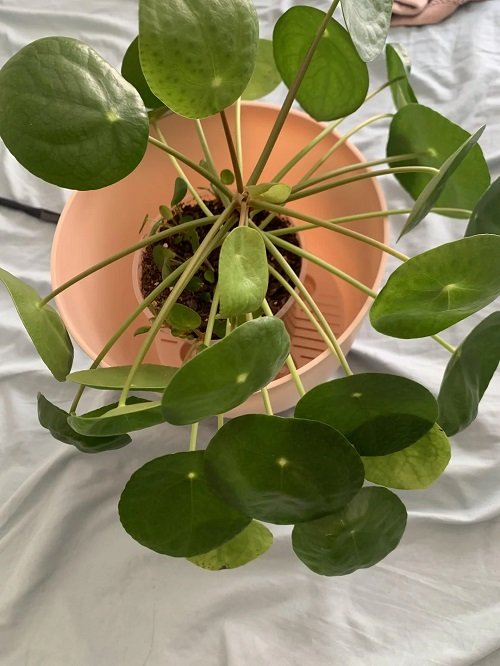
Overwatering can hinder root development and nutrient uptake, leading to stunted growth or a lack of new growth. The plant may appear stagnant and not show signs of healthy, vibrant growth.
Solution: Adjust your watering schedule to ensure the plant is not constantly sitting in water. Allow the soil to dry out between waterings and provide adequate time for the roots to breathe.
Check 16 Pilea Types & Varieties To Grow Indoors here
How to Save Overwatered Pilea?
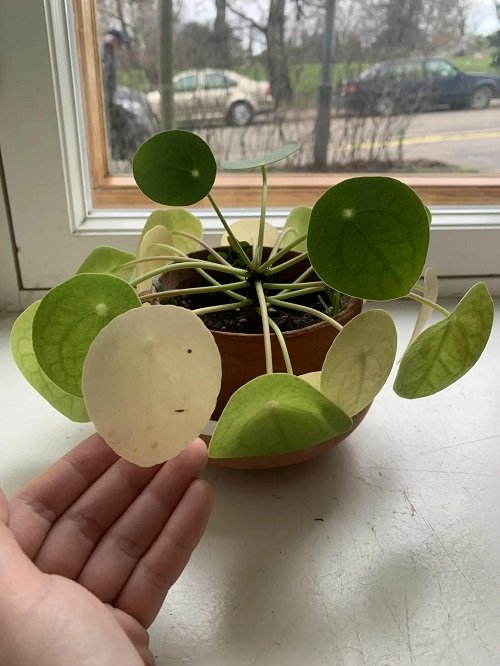
Here are some tips and tricks to help you rescue an overwatered Pilea:
- Assess the Damage: Evaluate the extent of the overwatering damage. Look for signs such as yellowing or wilting leaves, mushy roots, or moldy soil. This will help you determine the severity of the situation and guide your recovery efforts.
- Remove Excess Water: If the soil is saturated, carefully remove the Pilea from its pot and allow any excess water to drain away. Gently tap the root ball to remove excess moisture, or you can even use paper towels to soak up some of the water.
- Trim Damaged Roots: Inspect the roots for signs of rot or damage. If you notice mushy or discolored roots, trim them with clean and sharp scissors or pruning shears. Cutting away damaged roots will help promote healthy regrowth.
- Re-pot in Fresh Soil: Use a pot with drainage holes to ensure excess water can escape easily. Use a fresh and well-draining growing medium.
- Adjust Watering Routine: Adjust your watering routine to prevent future overwatering. Allow the soil to dry out between waterings partially, and ensure that you water the plant thoroughly but avoid leaving it in standing water. Check the moisture level of the soil regularly by inserting your finger about an inch into the soil. Only water when the top inch feels dry.
- Provide Adequate Light: Place the Pilea in a well-lit area with indirect sunlight. Adequate light will help the plant recover and stimulate new growth. Avoid placing it in direct sunlight, as it may cause further stress to the plant.
- Monitor and Care: Keep a close eye on the Pilea as it recovers. Watch for signs of improvement, such as new growth and healthy foliage. Be patient, as it may take some time for the plant to bounce back.

